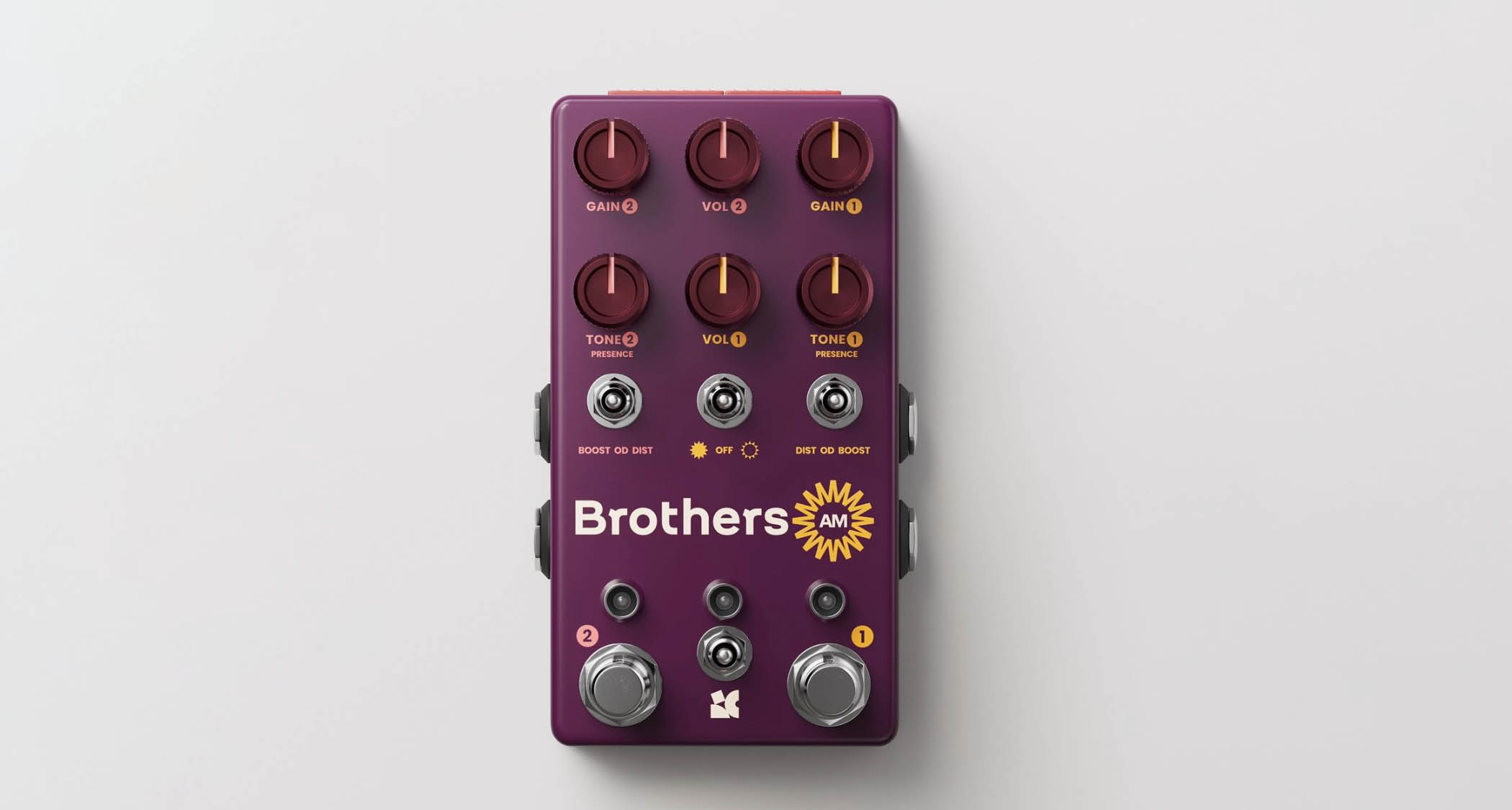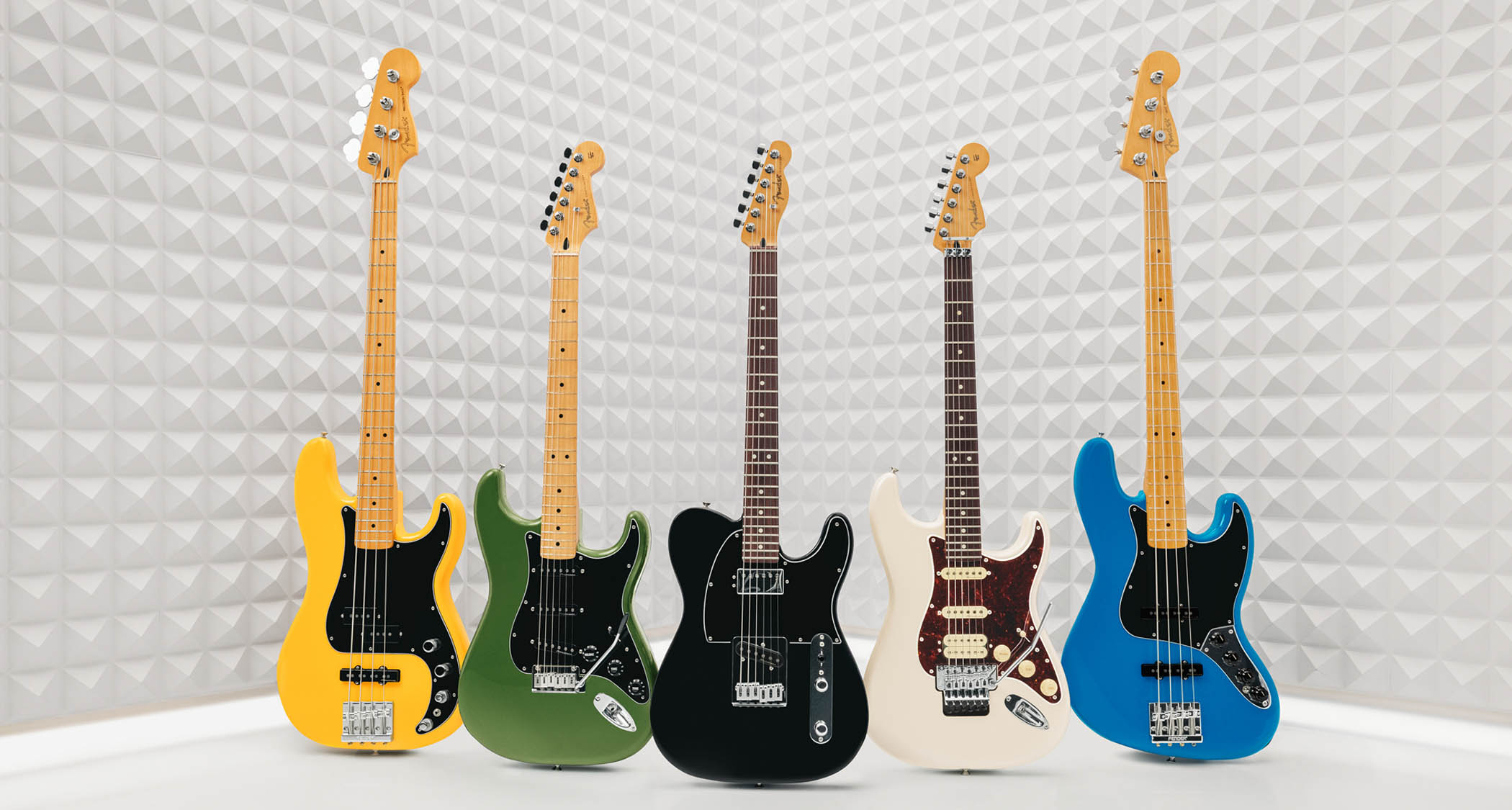"Despite their dated appearance, these legacy synths offer incredible versatility and potential": 7 classic Logic Pro synths you might have forgotten - but are still worth using today
Before you open your wallet for a new synth plugin, consider revisiting Logic's E series, 7 soft synths you may already own
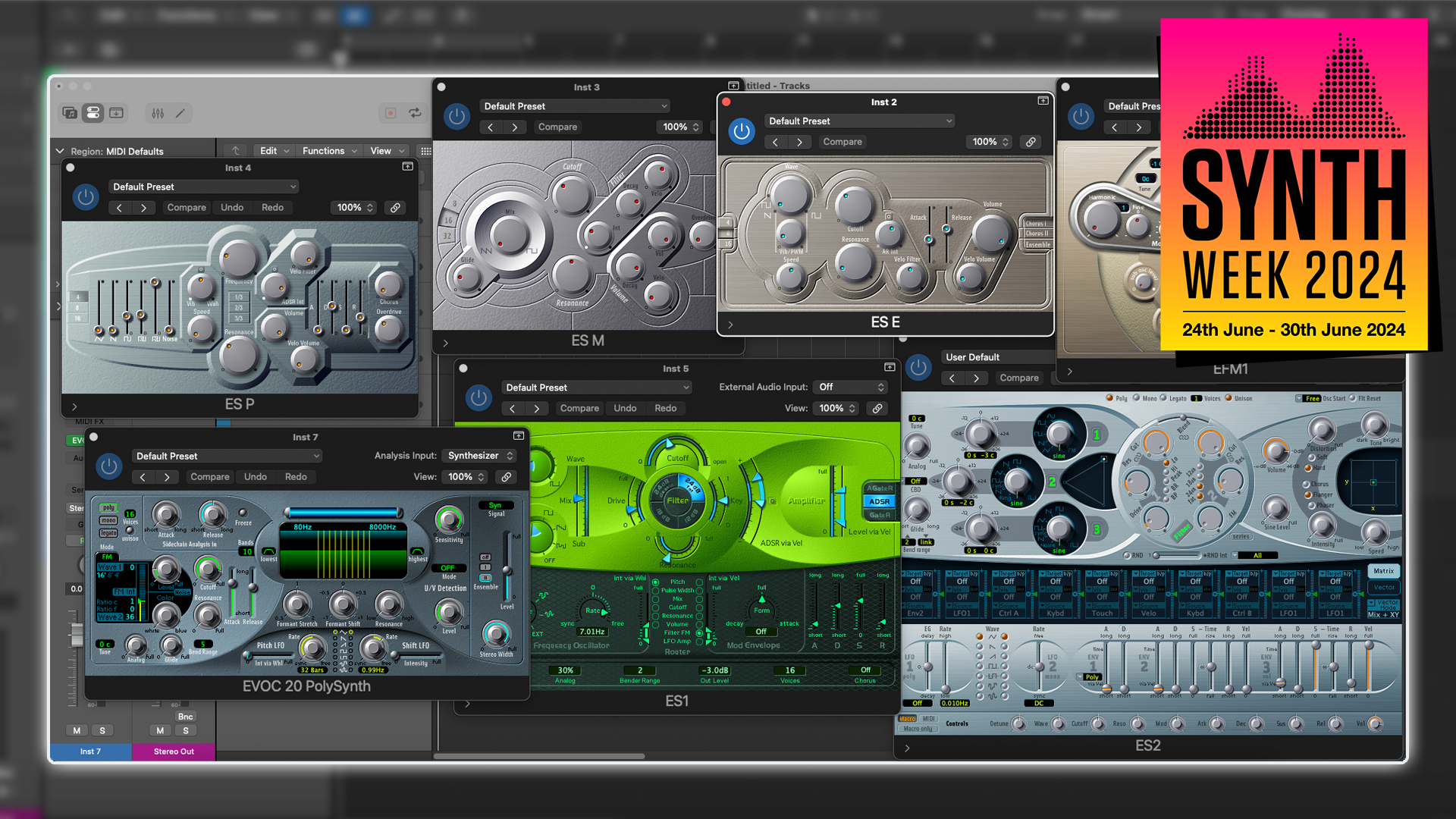
SYNTH WEEK 2024: Younger users and newcomers to Logic Pro might find some of Logic’s software synthesizers to look a bit outdated, and in some cases (such as the ES2) visually cluttered and somewhat inaccessibly complicated.
If you fall into this category, it’s worth revisiting these synths (with the help of this article), as despite their dated, early 2000s appearance, these “Legacy” synths offer incredible versatility and potential that will probably encourage you to hold off on those expensive, third-party software synths you’ve been eyeing up.
The “E” that prefaces these synthesizers’ names comes from “eMagic” which is the name of the company who first developed Logic, before it was acquired by Apple and rebranded from eMagic Logic, to Apple Logic Pro. Let’s delve into these often overlooked “E” synths, to see just how comprehensive and powerful they really are.
1. ES M
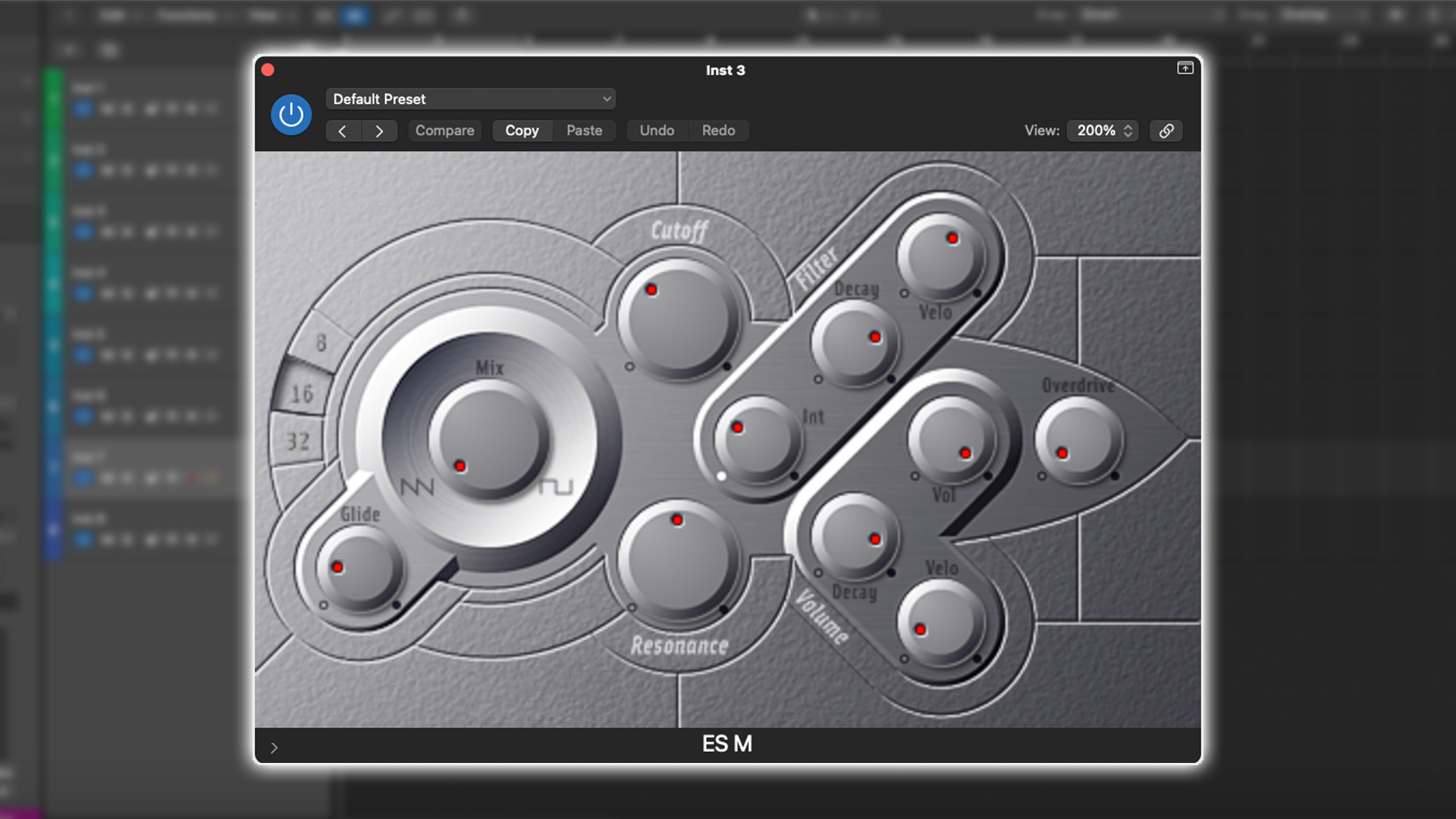
As the name suggests, the ES M is a monophonic synthesizer. In many ways, it harks back to the early days of synthesis, sharing a similar design ethos to early Moogs, Rolands and Korgs, and (like the early synths that inspire it) its strength lies in its simplicity and ease of use.
It utilises a single oscillator that can be blended/morphed between a sawtooth and square-wave shape, making it ideal for bass and lead-lines alike. With the filter open, it cuts through a mix with distinction and precision. The filter has an associated envelope, meaning it’s possible to create, expressive, plucky, and even squelchy tones. The amp envelope only has Decay and Volume controls, as well as a velocity sensitivity control (but that’s no bad thing, as the tone-design capabilities are still plenty). Lastly, for a little extra oomph and colouration, it also has an in-built Overdrive.
If you’re in need of a simple, yet effective synth-bass for electro, funk or EDM, there’s a strong chance this old stock synth will more than meet your needs. Consider pairing it with Logic’s Chorus (with D-Mode enabled) for a little extra Roland-style colouration. Alternatively, you could couple this synth with the Arppegiator in the MIDI Effects, and you’re a long way toward replicating the sounds and styles of the iconic Roland SH-101.
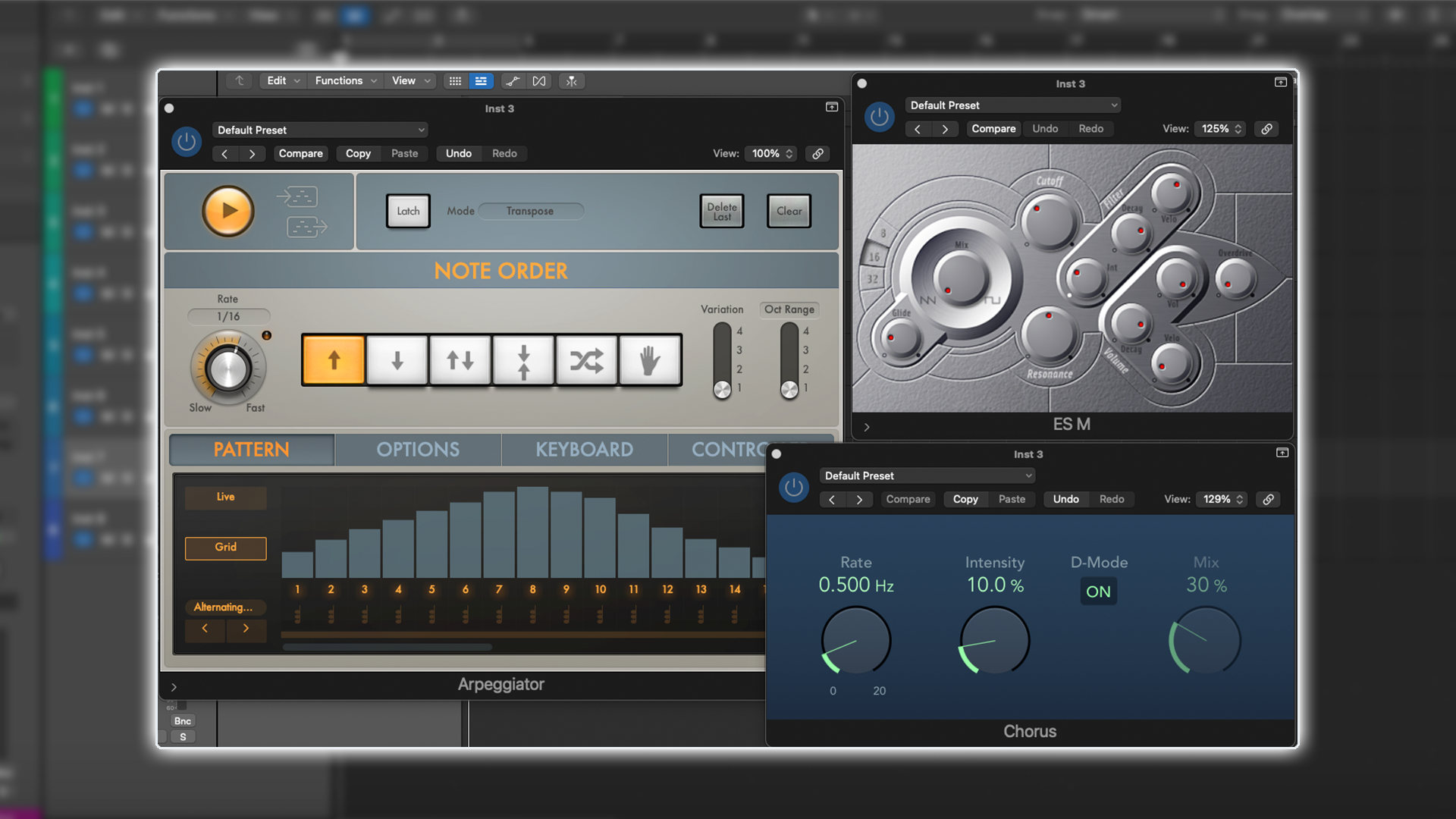
The ES M is a nifty little synth, perhaps somewhat overshadowed within the arsenal of Logic’s stock plugins. Its only real downside is that it doesn’t support pitch modulation, but that can be worked around with some creative use of the pitch-bend wheel.
Get the MusicRadar Newsletter
Want all the hottest music and gear news, reviews, deals, features and more, direct to your inbox? Sign up here.
2. ES P

A natural evolution of the ES M, the ES P offers a similar level of simplicity and ease of use, in a package geared towards polyphonic patches.
There are oscillator volume sliders for triangle, sawtooth, square, pulse -1, pulse -2, and noise. Not only is this a great way of blending different oscillator shapes to create the tone you’re looking for, but if you’re new to synthesis, this is a great tool for learning what different oscillator shapes sound like to begin with.
Beyond this, like the Roland Juno that most likely inspired it, there’s an LFO that can be assigned to either pitch modulation (Vibrato) or filter modulation (Wah), and the envelope can either be assigned to the Amplitude or the Filter. The filter can also be set to be velocity-sensitive.
Like the ES M, there’s an Overdrive control for colouration, but there’s also a Chorus control, negating the need to use an additional chorus plugin in your channel-strip.
3. ES E
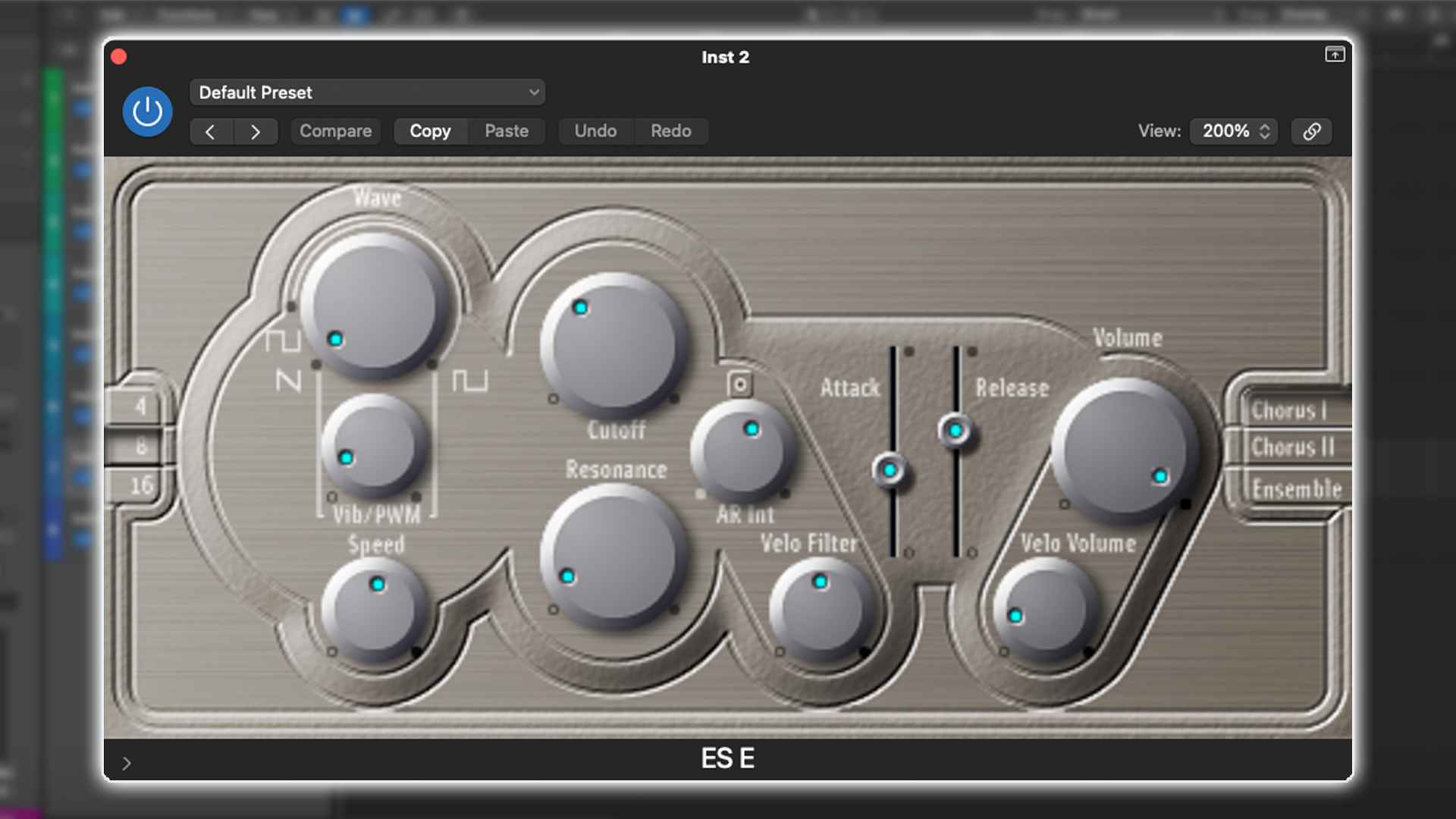
When it comes to designing functional pads that won’t detract from other things in the mix, this synth is a real gem! As with the ES M and ES P, the ES E is wonderfully simple, intuitive and user friendly. It has one Oscillator that can be either a sawtooth or variable pulse, a Filter and an Attack/Release amp-envelope.
There’s an LFO that can either provide vibrato or pulse-width modulation, the A/R (attack/release) envelope and/or velocity sensitivity can also be assigned to the Filter.
At the end of the signal chain are three different types of Chorus (Chorus I, Chorus II, and Ensemble), each providing distinct colouration and interest. All in all, this is an awesome pad-machine that can add depth and layers to a mix, quickly and simply.
4. EFM1

Every synth we’ve looked at so far is subtractive, however EFM1, as the name would suggest, is an FM synth. In a nutshell, FM synthesis allows for the creation of metallic, glassy, and other complex/nuanced tones (often with percussive transients), all of which is unattainable with conventional subtractive synthesis alone (for more background on what FM synthesis is, check out our article on Dexed).
Whilst the EFM1 isn’t as comprehensive as something like Yamaha’s FM flagship, the DX7, it nevertheless nicely gets us in the ballpark of what FM tonalities can achieve. It offers a superb alternative tonal palette to the aforementioned synthesizers, and providing you understand a little about how FM synthesis works, it’s just as intuitive and user-friendly as the synthesizers outlined above.
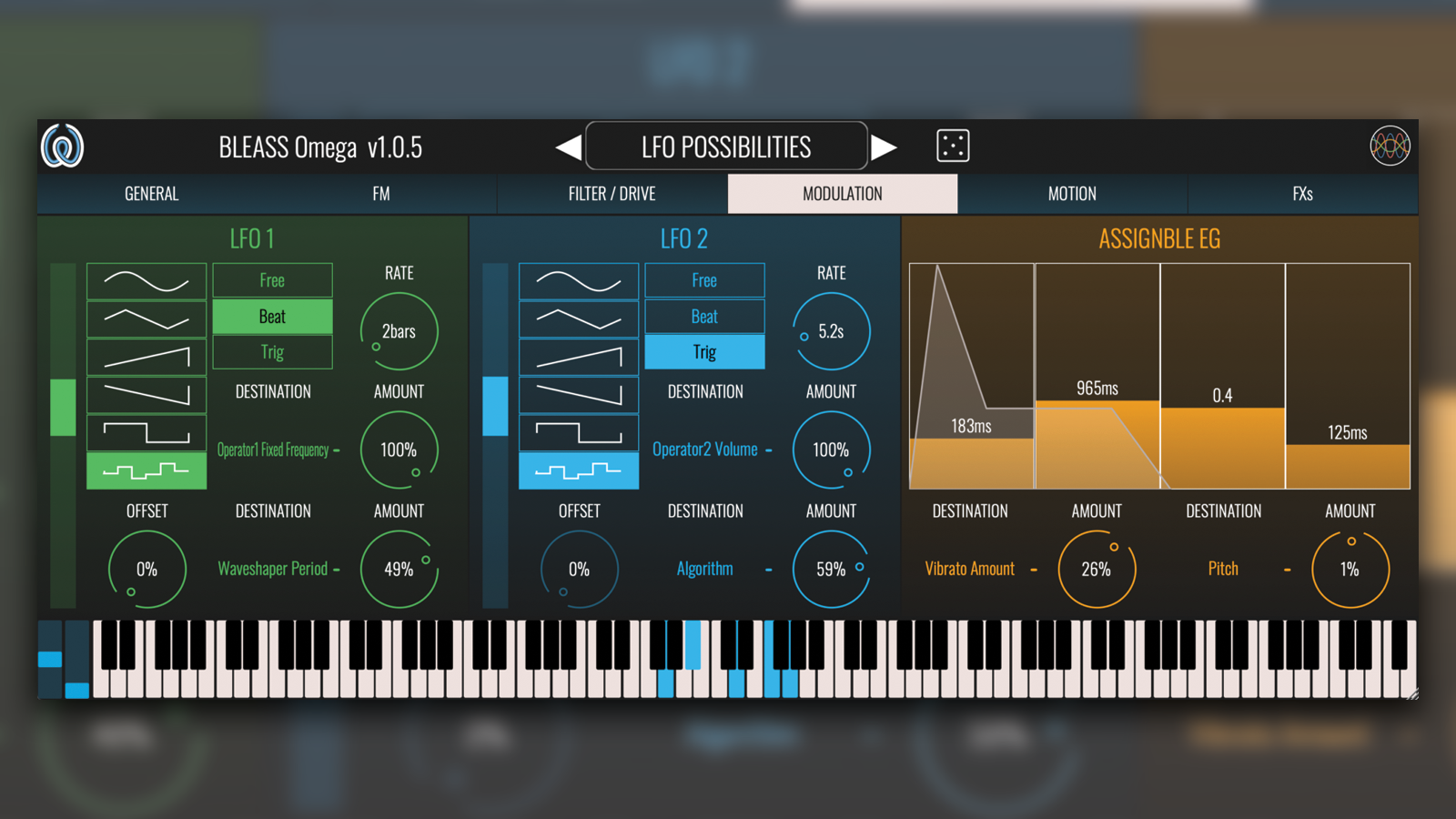
How to use FM synthesis to design sounds you'll actually use in your music
The EFM1 has a coherent layout and workflow, presenting us with a one-operator setup (one Modulator and one Carrier). Both the Modulator and Carrier can be tuned, and/or fixed to specific harmonics, and have a dedicated Modulation-Envelope and LFO-assign options. The large FM dial in the middle provides instant access to how mild or strong the FM modulation is and there are several embellishment options in the form of a Sub Oscillator, Stereo Detune and Velocity Sensitivity.
After a little time spent familiarising yourself with this synth, you'll likely be impressed at how authentically close it can come to achieving tones similar to more advanced FM synths, such as Yamaha’s DX7. Moreover, if you pair it with the ES P or ES E in a track-stack, you can have the best of both worlds; the warmth of polyphonic, subtractive poly tones/pads and the bite and texture of FM harmonic overtones.
5. EVOC 20 PS
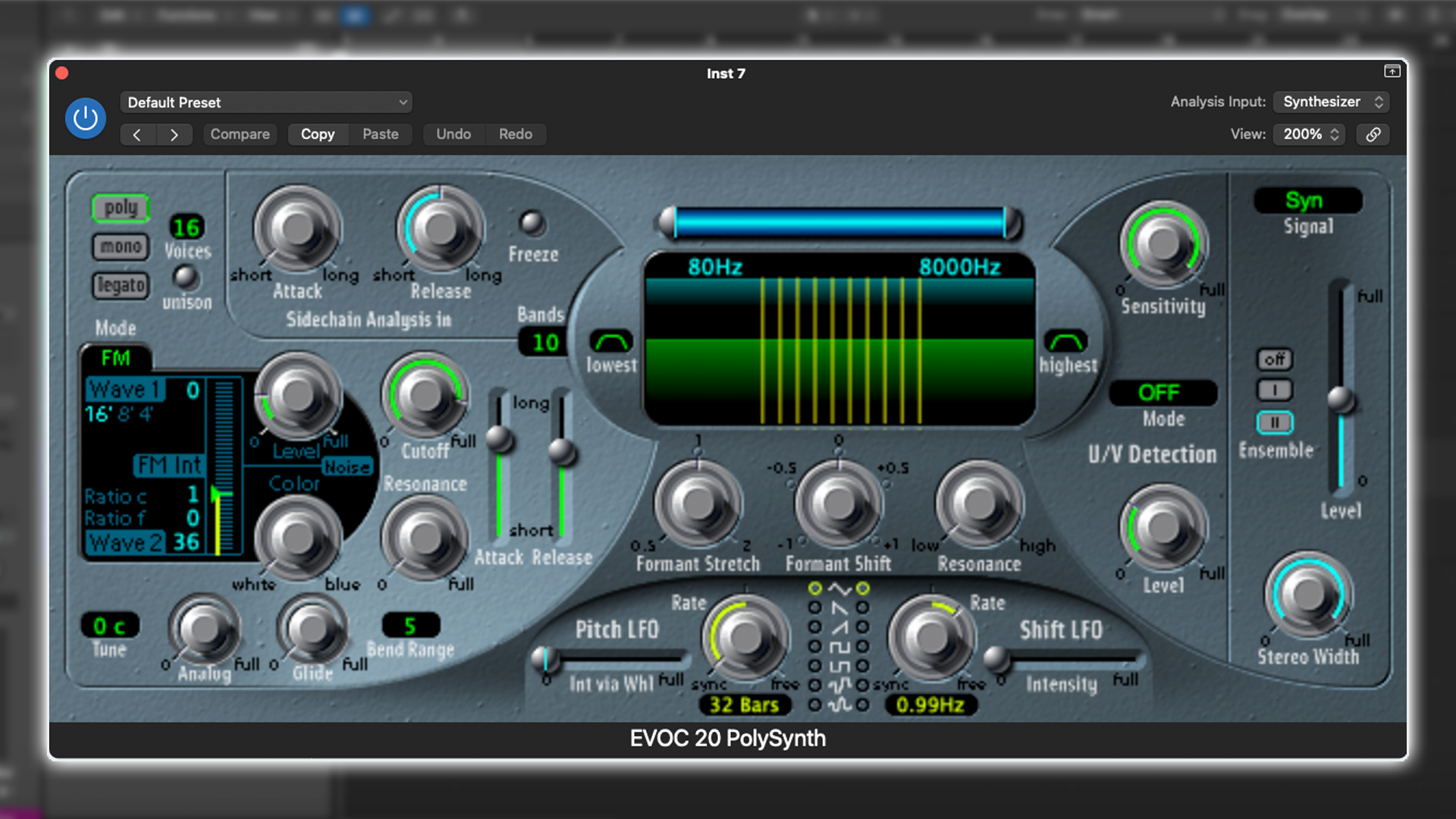
With subtractive and FM synthesis covered to varying degrees by the aforementioned synths, we should now turn our attention to the EVOC 20 PS and its vocoder capabilities. Vocoder synths use an audio signal to envelope the amplitude of the synthesised signal. When coupled with the human voice, it sounds akin to robotic speech and was arguably made most famous by Kraftwerk in the late 1970s. For more details on vocoding, check out our article on the TAL Vocoder.
The vocoding options here are comprehensive, allowing for control over the input-signal analysis, sensitivity and detection. There are Formant Stretch, Shift and Resonance parameters too, which really help dial in clarity and cohesion in vocoded tones.
The vocoding options here are comprehensive, allowing for control over the input-signal analysis, sensitivity and detection
This synth doesn’t have to be used as a vocoder and beneath the (optional) vocoding features lies an interesting and unusual synthesizer. It’s loaded with two Oscillators which can be configured in parallel, or in a modulator/carrier FM configuration. There’s also a Noise Oscillator for added air and texture (which can be blended between white and blue noise). Alongside this versatile oscillator setup is a Cutoff Filter, Analogue emulation, A/R Envelope, two assignable LFOs, two Chorus options, and Stereo Width.
Frankly, the EVOC 20 PS, with its unique design and approach to vocoding and synthesis in general is something of an unassuming powerhouse (albeit a slightly unusual one).
6. ES1

The ES1 can be considered an evolution of the previously mentioned subtractive synths, in that it’s more comprehensively feature-laden, and yet just as intuitive and easy to use as its siblings.
We have two Oscillators, both with a range of wave-shapes. The Filter has different slope options, Velocity Sensitivity and a Drive option. The Amp-Envelope is a full ADSR Env, and Velocity Sensitivity is fully controllable. There is an assignable LFO with wave-shape options and an Attack/Decay modulation envelope. For a little added colouration, there is analogue emulation and Chorus.
Essentially, the ES1 has all the necessary building blocks of a versatile synth, and it would adequately meet the needs of most users, in most instances. Furthermore, for the sake of teaching, or if you’re new to synthesis and have just begun to learn the basics, I can’t think of a more suitable synth to help demonstrate the principles and routing conventions of subtractive synthesis. Of all the synths mentioned in this article, this is the one I use the most!
7. ES2

And so here we are… Having worked our way through all of the old “E” synths, we arrive at the final-boss! The ES2!
In this day and age, Alchemy is Logic Pro’s leading synthesis power-house, but turn back the clocks twenty years, and the ES2 would have been just as significant an instrument in its heyday. This synth has more variables than you’ve had hot dinners, and can be as inspiring as it is daunting (especially to new users).
There are three (independently tunable) Oscillators, each capable of a wide range of wave-shapes. In fact, an easy to overlook feature is that the bottom most option of each oscillator wave-shape is its own wavetable submenu. Click and drag on the word “sine”, and you’ll find a large array of different wavetable shapes to choose from (which, in some cases, simulate very FM characteristics).
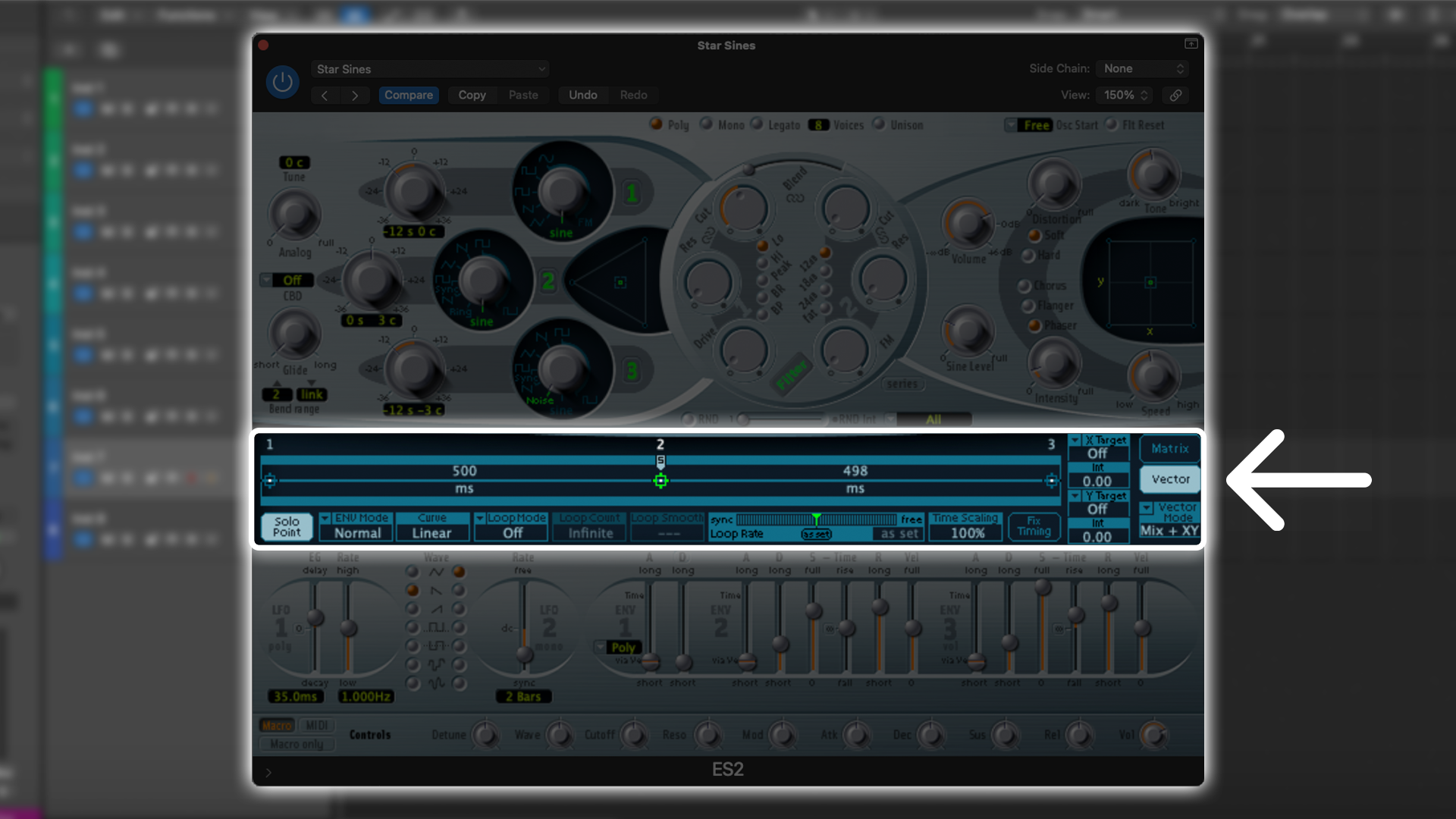
There are two Filters which can be run in series or parallel and offer a range of different filtering shapes, slopes and other options. The Effects section allows for Distortion, a Sub-Oscillator and a choice of Chorus, Flanger or Phaser. There are two assignable LFOs, one of which has a delay control, and three assignable Envelopes (one A/D and two ADSTRV).
There are a whopping ten Source/Via/Target routing matrix slots for assigning just about any aspect of the synth to any other aspect of the synth. Select the Vector option on this panel and it changes to reveal a fully customisable Envelope editor (somewhat similar to the envelope editor in the TAL NoiseMaker), which allows for the synth to envelope/modulate between two entirely different states of being, across the entire gamut of setting.
Frankly, the team at eMagic thought of almost everything when designing this synth, and you’ll rarely find anything as comprehensive or versatile in either the stock or third-party plugin market.
That just about wraps up our overview of Logic’s older, sometimes overlooked synths. As someone who’s worked with Logic for twenty years, I’ve spent more time than I can remember working with these synths, and I hold them in very high regard.
There’s little you can’t do with them, and I still find it most impressive that such a comprehensive selection of synths comes as stock with a £200 piece of software (that also offers so much else to boot).
That said, I’ll be the first to admit that they are in desperate need of a visual overhaul/redesign. They look dated, and in some cases, especially the ES2, some of their best features are buried in menus and you could be forgiven for not realising their full potential.
I’ve not doubt a cosmetic overhaul of these synths is on a Logic developer’s “to-do” list at Apple HQ, and if/when they’re cosmetically brought up to date, I can foresee these synths experiencing something of a renaissance, as they’re rediscovered for the absolute gems that they truly are.


“OSC” Steve is a composer, producer and educator with a background in piano, synthesisers and sound-engineering. He is an established, independent artist in the Synthwave and Retrowave music scenes, and has composed for several independent video-games including Nintendo Switch™ titles.
“Excels at unique modulated timbres, atonal drones and microtonal sequences that reinvent themselves each time you dare to touch the synth”: Soma Laboratories Lyra-4 review
e-instruments’ Slower is the laidback software instrument that could put your music on the fast track to success









